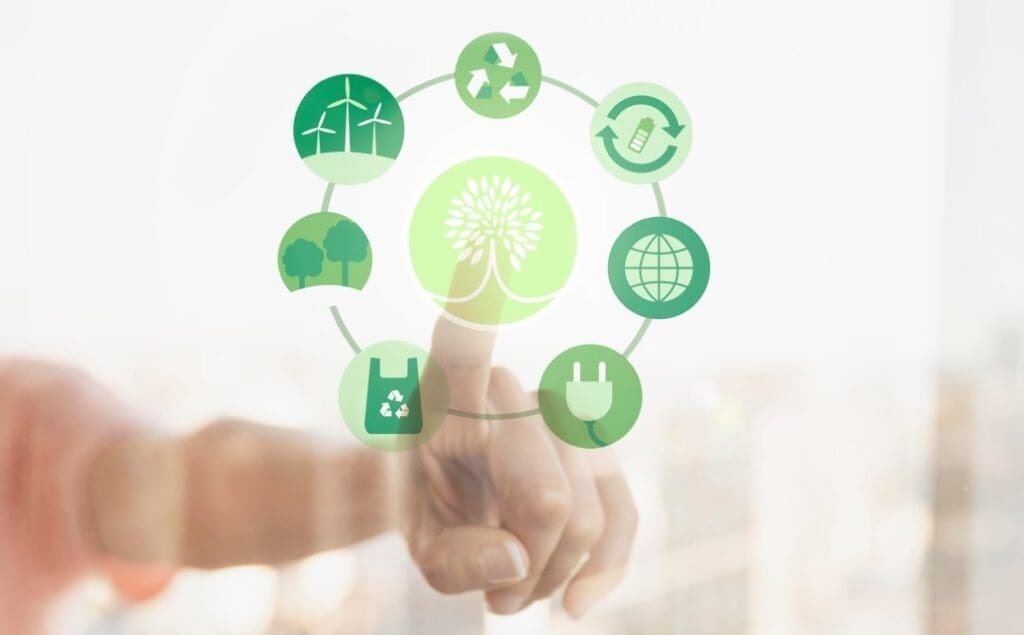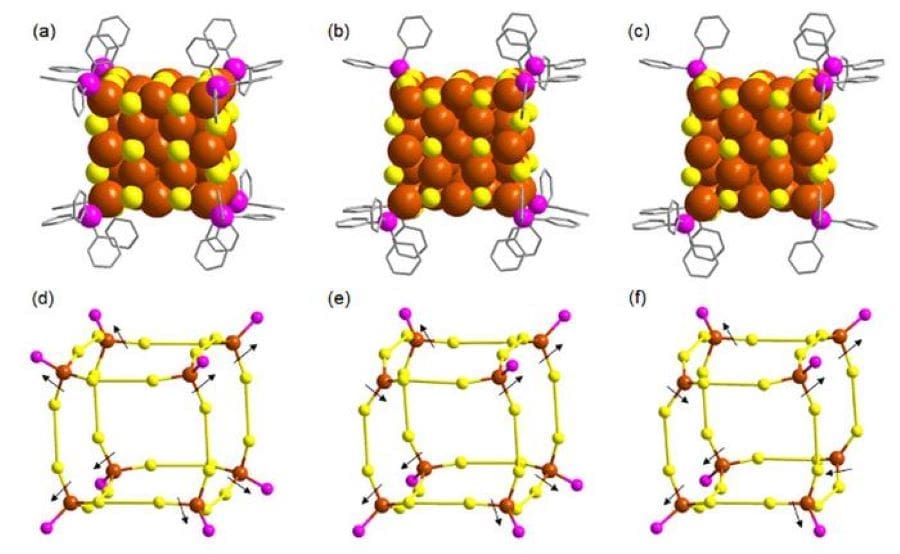Climate change plans include unrealistic land demands: an area larger than the US
Lund University – For the first time, an international team of scientists have calculated the total land area that the countries of the world have included in their individual plans for climate action, known as nationally determined contributions. The results show a big divide between the countries’ expected land use and the actual potential of land to mitigate climate change.
“By totalling the aggregate land area that countries want to use to reach net zero emissions, our study shows how unrealistic the NDCs are. If fully implemented, the plans will affect land currently used for other purposes. This would create major conflicts around food production and biodiversity,” says Wim Carton, senior lecturer at Lund University.

Every five years, countries that support the Paris Agreement produce nationally determined contributions, NDCs, which set out their plans for action on climate change. While not legally binding, the NDCs can be seen as an indication of how different countries plan to meet their climate change mitigation and adaptation targets.
The research study, published in Nature Communications, calculates the total amount of land that would be taken up if the countries’ climate plans are implemented. In total, the researchers reviewed 194 different NDCs and were able to convert land strategies into hectares for 140 countries.
Forests to sequester carbon dioxide
Under the plans, a large part of the land in question, 40%, will be converted to forest to store carbon dioxide (as the forest grows, carbon dioxide is absorbed from the atmosphere and sequestered by the trees). The remaining land area includes ecosystem restoration, land and forest restoration, and for a few countries, projects to capture and store carbon in various ways.
“While we will probably need to capture and store carbon in the future to reach net-zero emissions, we clearly need to stop relying so heavily on tree planting and bioenergy crops. Otherwise, we will exacerbate the problems we already have with high-intensity agriculture and unsustainable land use.”
Above all, countries need to have more realistic expectations about the role that land can play. Existing scenarios are unlikely to work, and if they do, there would be catastrophic consequences for livelihoods, ecosystems and biodiversity. They also distract from actions that need to be taken here and now to reduce emissions.
Major users of fossil fuels put their hopes in land
Some NDCs stand out more than others, say researchers. For example, a number of countries in sub-Saharan Africa are committing to using more than a fifth of their land area to reach net zero emissions. If implemented, this would result in already vulnerable and poor people losing access to land they need to survive.
But even large-scale fossil fuel users are planning to use a lot of land to meet their climate targets.
“The countries that emit the most seem to want to continue business as usual. Instead of stepping up their efforts to reduce emissions, they foresee a future where they simply offset any emissions by removing carbon on a large scale.”
Journal Reference:
Dooley, K., Christiansen, K.L., Lund, J.F. et al. ‘Over-reliance on land for carbon dioxide removal in net-zero climate pledges’, Nature Communications 15, 9118 (2024). DOI: 10.1038/s41467-024-53466-0
Article Source: Press Release/Material by Lund University
Climate and Economy: Even less extreme but more frequent weather events have significant and lasting impacts that can exacerbate inequalities
Sant’Anna School of Advanced Studies, Pisa – Not just hurricanes and droughts: less extreme but more frequent weather events, such as thunderstorms, can have significant and lasting economic impacts, with effects that vary across different socio-economic groups.
This is one of the main findings of the study recently published in the Journal of Environmental Economics and Management (JEEM), conducted by researchers from the Institute of Economics and the Department of Excellence L’EMbeDS at the Scuola Superiore Sant’Anna, the Department of Statistics at the Pennsylvania State University, and the Department of Economics at Northwestern University.
The study highlights how these phenomena, while less destructive than hurricanes, affect wages and incomes in ways that exacerbate existing economic inequalities. In particular, labor income is the most affected.
The study used detailed data on over 200,000 weather events that occurred in the United States between 1991 and 2019.

“These are events that, although not considered true extreme phenomena, still cause significant damage, and their frequency leads to an accumulation of damage over time,” explains Matteo Coronese, author of the study and researcher at the Institute of Economics and the L’EMbeDS Department of Excellence of the Scuola Superiore Sant’Anna.
By combining meteorological data with economic information at the county level, the researchers analyzed the trends in wages and incomes after exposure to these storms. “The results indicate that wages experience persistent losses over time, while incomes tend to recover gradually,” continues Coronese. “Since wages constitute the majority of income for the poorest segments of the population, these dynamics imply a worsening of already high income inequalities.”
“The estimated impacts, although significantly lower than those of extreme events like the one recently observed in Valencia, are still non negligible,” highlights Federico Crippa, author of the study and PhD candidate at the Department of Economics of Northwestern University. “Over a five-year period, a significant increase in exposure to thunderstorms leads to wage losses equivalent to about half of the contraction seen after the 2007 financial crisis.”
“The geographic and social distribution of these impacts is notable,” adds Francesco Lamperti, author of the study, professor at the Institute of Economics and the L’EMbeDS Department of Excellence of the Scuola Superiore Sant’Anna, and scientist at the Euro-Mediterranean Center on Climate Change. “The poorest counties suffer more severe losses, highlighting a lack of adaptation compared to wealthier areas. However, the study emphasizes that public intervention can play a crucial role: counties that receive federal aid immediately after one of the storms considered in our study do not experience significant losses in either wages or incomes.”
“Another important aspect concerns the impact on productive sectors,” explains Francesca Chiaromonte, author of the study, professor at the Institute of Economics of the Scuola Superiore Sant’Anna and at the Department of Statistics of the Pennsylvania State University, and scientific coordinator of the L’EMbeDS Department of Excellence. “We have observed that sectors with higher physical capital intensity, such as manufacturing, suffer the most significant losses, along with a reduction in employment. It will be essential to extend the analysis to other regions of the world to understand similar dynamics in different contexts.”
“Our study is part of a growing focus on the economic impacts of weather events,” comments Andrea Roventini, author of the study, director of the Institute of Economics at the Scuola Superiore Sant’Anna, and member of the L’EMbeDS Department of Excellence.
“With climate change threatening to increase both the frequency and the intensity of these phenomena, it is crucial to strengthen adaptation and mitigation policies to reduce local vulnerabilities and promote greater economic resilience. This study,” concludes Roventini, “demonstrates how integrating large datasets from various sources can offer new perspectives on the socio-economic dynamics linked to weather events. Such approaches, central to the mission of the Institute of Economics and the L’EMbeDS Department of Excellence, provide crucial tools for understanding and addressing global challenges related to climate and inequality.”
Journal Reference:
Matteo Coronese, Federico Crippa, Francesco Lamperti, Francesca Chiaromonte, Andrea Roventini, ‘Raided by the storm: How three decades of thunderstorms shaped U.S. incomes and wages’, Journal of Environmental Economics and Management 130, 103074 (2024). DOI: 10.1016/j.jeem.2024.103074
Article Source: Press Release/Material by Sant’Anna School of Advanced Studies, Pisa
Researchers harness copper versatility to enable control of CO₂ reduction products
AIMR | Tohoku University – Rising CO₂ emissions are accelerating global warming and climate change. But what if scientists could repurpose excess CO₂ into a potential energy source?
Electrochemical reduction is a promising way to achieve this. Through this catalyst-driven process, CO₂ is converted into products like carbon monoxide (CO), methane (CH₄), ethanol (C₂H₆O), or formic acid (HCOOH). Yet, barriers remain in trying to achieve industrial-scale production of specific products. This is because in CO₂ reduction, the reaction can lead to several potential outcomes.
Scientists, therefore, are experimenting with ways to influence the reaction pathways, making it more likely that specific products will be formed.
A group of researchers from Tohoku University, the Tokyo University of Science, and Vanderbilt University have turned to the versatile metal copper, using it as a catalyst for electrochemical CO₂ reduction, to achieve controllable product specificity. By controlling the structural architecture of copper at the nanoscale, they could precisely shape the copper into nanoclusters under 2 nm in diameter, thereby enhancing the efficiency of its use as a catalyst.
Details of their research were published in Small Science.

“We explored defect-induced copper nanoclusters as a cost-effective alternative to noble metal nanoclusters, tailoring them to produce specific high-energy-density products,” says Yuichi Negishi, a professor at Tohoku University’s Institute of Multidisciplinary Research for Advanced Materials (IMRAM).
The team enhanced the nanoclusters’ performance by creating specific active sites through deliberate defects in the cubic copper structure. By slightly dislocating some copper atoms, they prevented surface-protecting ligands from attaching to certain areas, leaving these spots exposed. These dislocated atoms appeared not only at the cube’s corners but also along its edges, forming a network of reactive sites ideal for CO₂ reduction.
This unique arrangement of copper atoms allowed the team to guide the reaction more effectively, improving the selectivity and efficiency of the desired products.
Tests showed that nanoclusters with a single modified vertex were highly selective for producing methanol (CH₃OH). However, as the number of defect sites increased, the selectivity shifted toward different products.
“Our research underscores the potential of copper nanoclusters as an affordable CO₂ reduction catalyst, highlighting how their structural design influences product selectivity,” adds Negishi.
Such advancements could drive the development of new functional materials from readily available resources, potentially creating a more sustainable future.
Journal Reference:
Sourav Biswas, Tomoya Tanaka, Haohong Song, Masaki Ogami, Yamato Shingyouchi, Sakiat Hossian, Maho Kamiyama, Taiga Kosaka, Riki Nakatani, Yoshiki Niihori, Saikat Das, Tokuhisa Kawawaki, De-en Jiang, Yuichi Negishi, ‘Highly Selective Methanol Synthesis Using Electrochemical CO2 Reduction with Defect-Engineered Cu58 Nanoclusters’, Small Science online ver., 2400465 (2024). DOI: 10.1002/smsc.202400465
Article Source: Press Release/Material by Tohoku University
Featured image credit: Gerd Altmann | Pixabay




